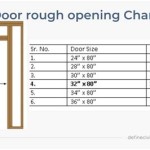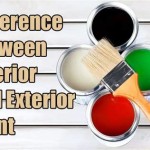```html
Interior Designers In Miami, Florida
Miami, Florida, a city known for its vibrant culture, stunning architecture, and luxurious lifestyle, is a hub for exceptional interior design. The demand for skilled interior designers in Miami stems from a diverse range of clients, including homeowners seeking to enhance their living spaces, developers creating high-end residential and commercial properties, and businesses aiming to establish a distinctive brand identity. The city's unique aesthetic, a blend of Art Deco, modern, and tropical influences, requires designers with a keen understanding of local trends and a capacity to translate them into functional and visually appealing environments.
The interior design scene in Miami is characterized by its dynamism and innovation. Designers in this region must stay abreast of the latest materials, technologies, and design philosophies to meet the evolving needs and preferences of their clientele. They often collaborate with architects, contractors, and other specialists to ensure that projects are executed seamlessly and to the highest standards. Furthermore, the competitive nature of the Miami market necessitates that designers possess strong business acumen, marketing skills, and client management capabilities.
Understanding the Miami Design Aesthetic
The essence of Miami's design aesthetic lies in its ability to seamlessly blend sophistication with a relaxed, coastal vibe. This is achieved through the strategic use of color palettes, materials, and architectural elements that evoke a sense of tranquility and luxury. A significant aspect of Miami interior design is its connection to the city's Art Deco heritage, visible in the prevalence of geometric patterns, streamlined forms, and pastel hues. However, modern influences are equally prominent, resulting in designs that are both timeless and contemporary.
Interior designers working in Miami often incorporate natural light and outdoor elements into their projects. Large windows, open floor plans, and expansive terraces blur the boundaries between indoor and outdoor spaces, creating a seamless transition that takes advantage of the city's favorable climate and stunning views. The use of natural materials like wood, stone, and woven textures further enhances the connection to nature, adding warmth and character to interiors. Moreover, sustainable design practices are increasingly gaining traction in Miami, with designers prioritizing eco-friendly materials and energy-efficient solutions.
Color plays a crucial role in defining the Miami design aesthetic. While neutral tones like white, beige, and gray provide a versatile backdrop, pops of vibrant colors such as turquoise, coral, and yellow add energy and personality to spaces. These hues are often inspired by the city's tropical surroundings, reflecting the colors of the ocean, sky, and lush vegetation. Designers also employ metallics like gold and silver to introduce a touch of glamour and sophistication, particularly in high-end residential and commercial projects.
Key Services Provided by Interior Designers in Miami
Interior designers in Miami offer a comprehensive range of services tailored to meet the specific needs of their clients. These services typically encompass the entire design process, from initial concept development to final installation and styling. A thorough understanding of the client's vision, budget, and lifestyle is paramount, enabling designers to create bespoke solutions that are both functional and aesthetically pleasing.
Space planning is a fundamental aspect of interior design, involving the strategic arrangement of furniture, fixtures, and architectural elements to optimize the use of space and create a comfortable and functional environment. Designers employ various techniques, such as creating floor plans, generating 3D renderings, and conducting site surveys, to ensure that the proposed design meets the client's requirements and complies with building codes. Furthermore, they consider factors such as circulation patterns, lighting, and acoustics to create a harmonious and well-balanced space.
Material selection is another critical service offered by interior designers. This involves choosing the appropriate materials for flooring, walls, ceilings, furniture, and accessories, taking into account factors such as durability, aesthetics, and cost. Designers stay informed about the latest trends in materials and finishes, and they have access to a wide range of suppliers and vendors. They also consider the environmental impact of materials, prioritizing sustainable and eco-friendly options whenever possible. Moreover, designers provide guidance on color schemes and finishes, ensuring that all elements work together to create a cohesive and visually appealing design.
Project management is an essential service that ensures that the design project is completed on time, within budget, and to the required standards. Designers act as project managers, coordinating the work of various contractors, suppliers, and installers. They oversee all aspects of the project, from scheduling and budgeting to quality control and problem-solving. Effective communication and collaboration are crucial for successful project management, and designers maintain open lines of communication with all stakeholders. They also track progress, identify potential issues, and implement solutions to ensure that the project stays on track.
Beyond the core services, many interior designers in Miami also offer specialized services such as custom furniture design, lighting design, and art consultation. Custom furniture design allows clients to create unique pieces that perfectly fit their space and style. Lighting design involves the strategic placement of lighting fixtures to enhance the ambiance, functionality, and aesthetics of a space. Art consultation helps clients select and acquire artwork that complements their interior design and reflects their personal taste.
Factors to Consider When Choosing an Interior Designer in Miami
Selecting the right interior designer is a crucial decision that can significantly impact the success of a design project. It is essential to consider several factors to ensure that the chosen designer is a good fit for the project and the client's needs. Evaluating the designer's portfolio, experience, and qualifications is a primary step in the selection process.
A designer's portfolio provides a visual representation of their past work, showcasing their design style, expertise, and ability to deliver successful projects. Reviewing the portfolio allows clients to assess whether the designer's aesthetic aligns with their own preferences and whether they have experience working on similar types of projects. It is also important to look for evidence of creativity, attention to detail, and problem-solving skills.
Experience and qualifications are also important considerations. A designer with extensive experience in the Miami market will have a deep understanding of local trends, regulations, and resources. They will also have established relationships with contractors, suppliers, and other professionals, which can streamline the design process. Relevant qualifications, such as a degree in interior design and professional certifications, demonstrate the designer's commitment to their craft and their knowledge of industry standards.
Communication and collaboration skills are paramount for a successful designer-client relationship. The designer should be able to listen attentively to the client's needs, communicate effectively, and collaborate on design solutions. A strong client-designer relationship is built on trust, mutual respect, and open communication. It is important to choose a designer who is responsive, approachable, and willing to work collaboratively to achieve the client's vision.
Budget is a critical factor in any design project, and it is essential to discuss budget expectations with potential designers upfront. Designers should be transparent about their fees and expenses, and they should provide a clear and detailed breakdown of project costs. It is also important to discuss payment terms and any potential contingencies. A reputable designer will work with the client to develop a budget that is realistic and achievable, and they will provide ongoing updates on project spending.
Ultimately, selecting an interior designer in Miami requires careful consideration of the designer's portfolio, experience, communication skills, and budget. By conducting thorough research and asking the right questions, clients can find a designer who is capable of transforming their vision into reality and creating a space that is both beautiful and functional. Beyond the technical skills, the right designer will be attuned to the nuances of the Miami lifestyle and able to translate that understanding into a personalized and exceptional design.
```
Our Top 10 Best Interior Designers In Miami That Will Inspire You Inspirations Essential Home

Top 50 Interior Designers In Florida Part I Miami Design Agenda

Meet The Top Interior Designers In Miami

Top 10 Interior Designers In Miami Design District

Spotlight On Miami Living Spaces Dkor Interiors

A Nature Inspired Interior Design Project In Miami By Sarah Z Designs
The Best Interior Designers From Florida Part I Inspirations Essential Home

Top Interior Designers Miami

The Ultimate Home Design Inspiration Guide By Miami Interior Designers

Luxury Interiors Design By Katrina Antonovich 15 Years In Business
Related Posts








